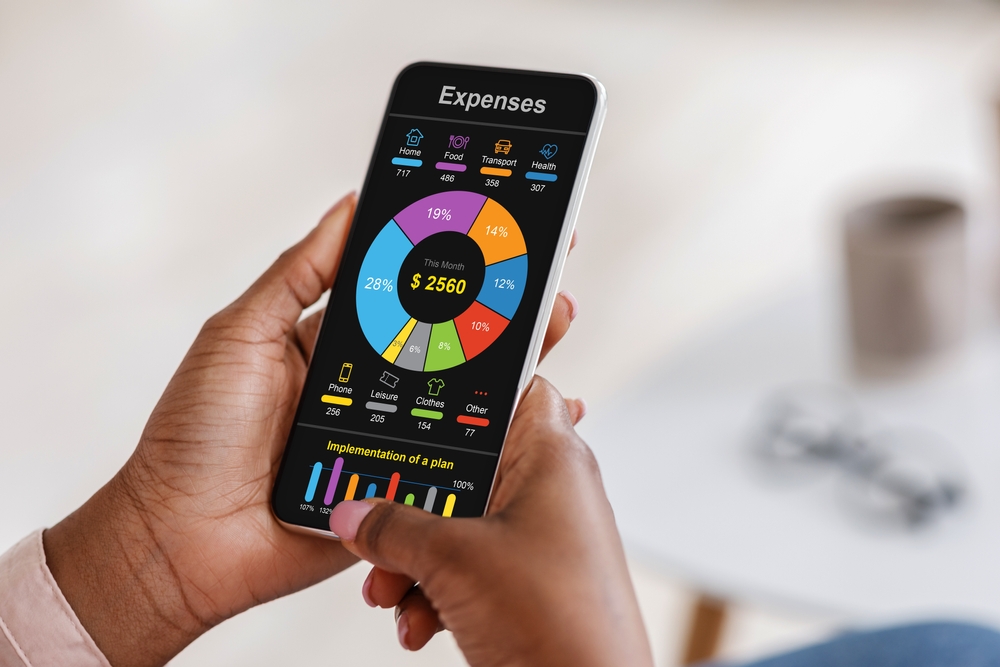Retiring early and wealthy isn’t just about earning more—it’s about thinking differently. While most people follow the traditional path and hope for the best, early retirees play the long game with intention, discipline, and a few smart, strategic habits. If you’ve ever wondered how they do it, here’s what sets them apart.
1. They Commit To A Sky-High Savings Rate

If the classic “save 15% of your income” advice sounds like peanuts, it’s because it is—unless you plan to work until you’re 65. To hit financial independence by 40 (or sooner), many follow through on saving 30–75% of every paycheck.T. Rowe Price notes that FIRE seekers often double or triple the typical savings rate, sometimes nudging 50% or more to get there faster. They funnel the rest into living expenses that won’t trigger a panic attack, like affordable rent or used cars.
That level of savings requires some soul-searching: Which lifestyle luxuries are worth it, and which can you live without? Early retirees become masters at mindful spending, distinguishing between fleeting splurges and meaningful experiences. To maintain high motivation, many visualize the day they become self-funded—spoiler alert: it’s a great feeling. They also set mini-goals (like hitting 25% saved) and celebrate with low-cost rewards—a picnic in the park, maybe, instead of a $200 gadget.
2. They Take Inventory Of Their Finances

Early retirees kick things off by getting ruthless with their financial snapshot. They map out every dollar coming in versus every cent going out, so there are no surprises hiding in the couch cushions, according to Business Insider. Self-made millionaires who retired early all started by calculating their net worth and annual spending to form the foundation of their plan. This isn’t a one-and-done deal—they revisit these numbers quarterly (or monthly, if they’re die-hard nerds). Having that clear picture helps you identify bleeding areas, like that “subscription I definitely use” that you actually don’t. Once you know your baseline, you can set realistic goals, whether ramping up savings or allocating more to investments. Plus, nothing feels better than watching your net worth graph line stubbornly creep upward.
Beyond the spreadsheets, this habit builds confidence. You’ll sleep better knowing exactly where you stand, instead of waking up in a cold sweat over “I think I spent too much on avocado toast.” It also lays the groundwork for automating everything from bill pay to retirement contributions (more on that later) because you understand your cash flows. Retire-early pros say that clarity is power—once you know your starting point, the path to financial independence lights up like a runway.
3. They Set A Safe Withdrawal Rule

Once you’ve accumulated enough to cover 25–30 times your annual expenses, you’re in the “withdrawal zone.” The popular 4% rule—save twenty-five times your annual spending—lets you draw 3–4% of your nest egg each year without running out of money for decades.
Not everyone sticks religiously to exactly 4%—many dial back to 3% to play it extra-safe, especially if they plan a 50-year-plus retirement. Early retirees also flex their budget in lean markets, quietly trimming discretionary spending when portfolios take a hit. It’s all about balancing peace of mind with living life now. And yes, occasionally checking your balance in secret just to feel like James Bond is totally normal.
4. They Live Way Below Their Means

Living frugally isn’t about deprivation—it’s about buying joy, not junk. FIRE aficionados often embrace minimalism: no fancy cars, no mansion mortgage, and definitely no impulse designer purchases. This approach advocates for eliminating items that don’t add value to daily life. It might mean cooking at home more, finding free community events, or even swapping a luxe coffee run for a budget-friendly pour-over at home.
Over time, low-cost habits become second nature—your definition of “treat yo’ self” shifts from pricey to purposeful. You’re still living a full life; you’re just choosing experiences (like a spontaneous weekend hike) over high-dollar consumption. Embracing frugal minimalism not only saves money but also reduces stress and fosters a more intentional lifestyle. It’s about making deliberate choices that align with your values and long-term goals. By focusing on what truly matters, you create a life that’s rich in experiences, not expenses.
5. They Make Their Health Their Most Valuable Asset

Early retirees know that good health isn’t just a perk—it’s the foundation of a long, vibrant, and active retirement.As the MassMutual Retirement Happiness Study found, nearly half of the happiest retirees said they prioritized their health when planning for retirement. Regular exercise and a healthy diet can reduce the risk of developing certain health conditions, increase energy levels, boost your immune system, and improve your mental health.
They don’t just hit the gym—they build movement into their daily lives . Whether it’s biking to the store, gardening, or taking brisk walks, staying active becomes second nature. They also focus on nutrition, opting for whole foods over processed ones, and making mindful choices that fuel their bodies. This proactive approach to health means fewer medical bills and more energy to enjoy life. Plus, it’s a great way to keep the mind sharp and the spirit high. By investing in their health, they’re investing in their future happiness . After all, what good is financial freedom if you can’t enjoy it?
6. They Automate Their Savings and Bills

Stop thinking about transferring money—you’ve automated it. Setting up recurring transfers from your checking account to savings, investment accounts, and bill payments means your financial priorities get handled without you lifting a finger. No more “Oops, I forgot to save this month” moments or guilt-laced impulse buys. Automation is the low-key life hack that keeps your future self happy while your current self binge-watches another docuseries.
With automation, you save before you spend. Your emergency fund grows quietly in the background—even on months when you don’t remember logging into your banking app. It’s like financial muscle memory: once it’s set, it just works. Plus, it removes the mental load of juggling due dates, transferring cash manually, or deciding which account gets what. You don’t have to rely on willpower—it happens like clockwork. And as your balances grow, your anxiety shrinks. Automation gives you the freedom to focus on the fun stuff—like perfecting your avocado-toast game or mapping out that dream beach escape.
7. They Harness The Power Of Compound Interest

Let time do the heavy lifting. The earlier—and more consistently—you invest, the more compounding works its magic. It’s not about dropping thousands into the market overnight—it’s about showing up month after month and letting your money hustle for you. Even small, regular contributions can snowball into something massive over time, as long as you give them room to grow.
Think of compound interest as your financial hype-person: it takes your initial investment, adds gains, then earns gains on those gains. It’s like a snowball rolling downhill—slow at first, then suddenly massive and unstoppable. Over 30–40 years, even modest investments can turn into six or seven figures, all while you sleep, sip coffee, or scroll memes. That’s why early retirees aren’t always obsessing over hitting every savings milestone in their 40s—they’ve already laid the groundwork. The system is working behind the scenes. Patience and consistency are their superpowers. So while others are sweating short-term gains, they’re out here casually winning the long game.
8. They Define And Track Their FIRE Number

Your “FIRE number” is the magic amount that, when multiplied by the safe withdrawal rate, covers your annual expenses indefinitely. AIA Financial Health recommends calculating 25–30 times your yearly spending to set this target.
Tracking progress toward that goal keeps you motivated. You can visualize milestone celebrations—like hitting 50% of your FIRE number—with small rewards that don’t derail your plan. It’s a fun way to stay engaged, turning long-term goals into bite-sized wins. You also get to skip the “am I there yet?” guesswork and know exactly how close (or far) you are. Pro tip: update it yearly to account for inflation and life changes—kids, moves, or the sudden obsession with sourdough baking. A clearly defined FIRE number turns financial freedom into a countdown, not a fantasy.
9. They Track Every Penny Spent

Frugality only works if you know where your money is going. Early retirees often use budgeting apps or simple spreadsheets to log every transaction. Wikipedia’s overview of the FIRE movement stresses tracking net worth and spending as the cornerstone habit; without it, you’re flying blind.
Seeing your spending laid bare can be eye-opening: that $5 latte habit adds up, and that half-price fashion sale still costs you. With data in hand, you can zero in on expenses that don’t spark joy and redirect that cash toward investments. This habit isn’t about guilt—it’s about power. Once you know where the money leaks are, you can patch them like a budgetary Bob the Builder. Bonus: it makes impulse purchases feel less “YOLO” and more “no-no.”
10. They Read Relentlessly About Personal Finance

Knowledge is compounding, too. Investopedia’s guide for 25- to 34-year-olds underscores the importance of learning about retirement accounts, investment strategies, and tax-advantaged vehicles early in your career. Podcasts, blogs, and books become your late-night entertainment. The more you learn, the better decisions you make—because you recognize opportunities (like a low-cost index fund) when they appear.
Plus, there’s something deliciously empowering about understanding words like “Roth conversion ladder” and “capital gains harvesting.” You’ll start to see the matrix behind financial systems, and spoiler alert—it’s way less intimidating once you decode the jargon. Education keeps your plan nimble, even when the economy decides to throw a plot twist.
11. They Only Buy What They Need

Minimalism isn’t just decluttering your home; it’s simplifying choices to focus on what truly matters. Empower notes that FIRE pioneers often streamline their lives—fewer possessions, fewer decisions, and more mental bandwidth for creative pursuits. When every impulse does not tempt you buy, you save more and stress less. Plus, a tidy living space feels pretty zen. You stop chasing the next shiny thing and start cherishing what you already have.
Your living room may look emptier, but your life feels fuller. And hey, less stuff means fewer things to dust—win-win. It also makes moving cheaper and easier, which comes in handy if you plan to geo-arbitrage your way to early retirement. Minimalism isn’t about living with nothing; it’s about making room for everything that actually matters. In a world obsessed with more, choosing less can feel like a radical act of self-care.
12. They Prioritize Wellness And Self-Care

Longevity is the ultimate retirement hack. Business Insider reported that retiring too early without purpose can backfire on your mental and physical health, so keeping active—through exercise, part-time projects, or social clubs—helps you enjoy your golden years fully. A healthy lifestyle prevents medical expenses from eating into your nest egg.
Think of your body as an investment portfolio—you nurture it now for better dividends later. Skipping that annual physical could cost more than you think, especially without employer-provided insurance. Walking a few miles a day is basically a free hedge against future healthcare costs. Plus, feeling good makes those travel dreams and retirement hobbies actually doable, not just Pinterest boards.
13. They Surround Themselves With Like-Minded People

Your vibe attracts your tribe. The FIRE Wikipedia page highlights how social media and community forums connect you with fellow savers, creating accountability and inspiration. Online groups, local meetups, or mastermind circles keep motivation high and spark new ideas—like geo-arbitrage hacks you’d never dream up solo.
When you’re surrounded by people who think early retirement is totally normal (and not some myth), your big goals feel less weird and more doable. You get fewer “you’re crazy” looks and more “teach me your ways.” Plus, having friends who cheer your progress (instead of tempting you with last-minute Vegas trips) is invaluable. Think of it as building your own FIRE hype squad.
14. They Plan For Their Second Act

Many early retirees explore “BaristaFIRE”—taking on part-time or passion projects to stay engaged and cover health insurance or social needs. Wikipedia notes that this hybrid approach blends freedom with purpose, preventing isolation and keeping you sharp.
Whether it’s freelance design, mentoring, or volunteering, having a low-stress gig can add meaning (and a bit of extra cash) without turning back the early-retirement clock. Think of it as your encore career—something that feeds your soul without draining your energy. It’s less about “working again” and more about staying active on your own terms. And hey, that side hustle income doesn’t hurt either—it’s basically play money for hobbies, travel, or spoiling your dog.
This article is for informational purposes only and should not be construed as financial advice. Consult a financial professional before making investment or other financial decisions. The author and publisher make no warranties of any kind.







